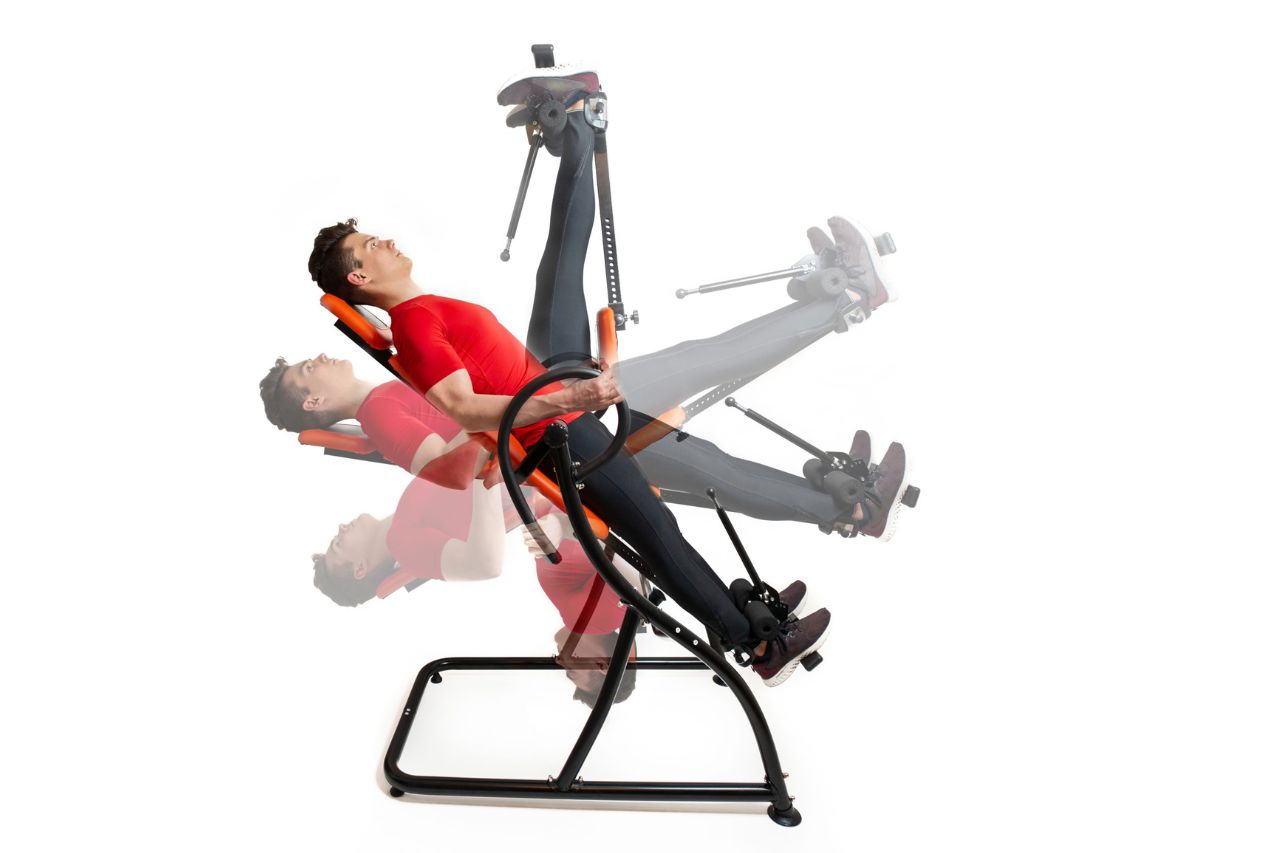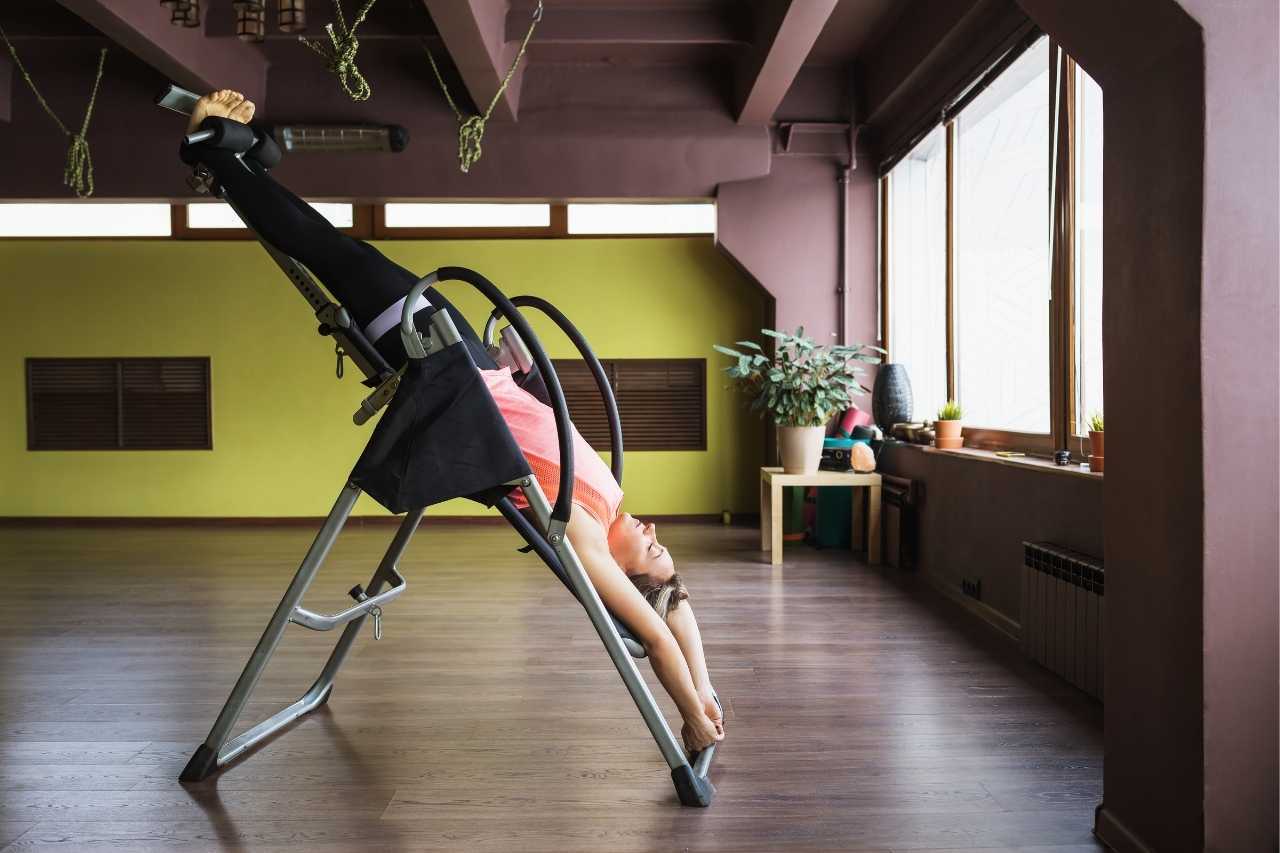An inversion table is a fitness device that is used to put one’s body at various angles. This is done to decompress the spine under the influence of gravity. The table is equipped with, in most cases, ankle restraints to enable a user to recline backward while their body is inverted in order to relieve the pressure on the discs of the spine.
This method is called inversion therapy and is used for treating back problems, correcting postures, and increasing the range of motion. This technique is often included in wellness routines, but it is crucial to clarify the benefits as well as the risks involved before one starts using this method. Have you ever experienced back pain or considered alternative methods, such as inversion therapy, to manage it?
What is an Inversion Table?
Definition and Purpose
An inversion table is a piece of equipment that assists individuals in performing inversion therapy by allowing them to lie structured on an inverted plane. Inversion therapy has existed for centuries, and it was used as a way of healing in those times because it was thought that upside down bodies would be better than the regular position. People, however, do not do this for fun but rather to relieve back pain in a successful and less invasive manner.

How It Works
Inversion tables operate based on a very straightforward design that requires the user to hold onto their ankles and lean back, causing a backward tilt of the spine within the vertical axis. When the body is inverted, gravitation aids in pulling the spine, which results in the relief of the spinal discs and subsequent compression.It is thought that such decompression decreases discomfort by improving the spinal curves and lessening the pressure on the nerves.
3. Advantages of Inversion Table
Inversion tables have many advantages, especially for individuals with back issues and flexibility problems.
Below are some of the important benefits of inversion table:
Backache Relief: Inversion therapy causes the spinal discs to exert less pressure on the lower back thereby relieving backaches.
Improved blood circulation: When the body is in an inverted position it is likely that blood circulation would improve as it would have to work against gravity.
Improved Body Flexibility: Using inversion tables regularly can help stretch the muscles and improve joint flexibility
Combating stress: Since individuals take these medications to help them relax, it might help lessen the tension therein as well as the anxiety levels.
For additional techniques on how to relieve back pain, check out related articles on our site.
Potential Negative Side Effects
Though the therapy has its advantages in alleviating pain and discomfort, it too has its drawbacks. This therapy is not advisable for everyone and users should understand its demerits before including it in their routines.
The side effects include:
Dizziness and head pains: Being upside down may cause dizziness, lightheadedness, or headaches, especially for beginners
Increased Blood Pressure: Patients who are already suffering from hypertension or heart problems face risks due to inversion.
Specific Health Condition Risks: Individuals with conditions like glaucoma, stress, or heart problems should avoid inversion therapy, as it can worsen their condition.
Inversion Therapy Do’s and Don’ts
Inversion therapy should not be used under certain medical conditions.
The following are some of such conditions:
- Glaucoma
- Heart ailments
- High blood pressure (Hypertension)
- Prolapsed intervertebral discs (without medical instructions)
Recommended Exercises Using an Inversion Table
Hang-ups are not the only activities that one can indulge in while utilizing an inversion table. There are also inversion table exercises that make one more flexible and enhance the health of the back.
There are some of the stretches and exercises that are recommended for those getting started really well:
Basic Inversion Holds: The first step is to hold an inverted position for 30-60 seconds, which helps decompress the spinal cord
Side Bends and Twists: In this position, one may also, in moderation, go from one side to the other, or rotate one’s torso, working out abdominal muscles and increasing their elasticity.
Stretching the Neck: The Advantages of Elevating the Neck While Hanging Depends on Freely Hanging.
Safety Tips for Beginners
If this is your first time to use an inversion table, here are the safety tips you should observe:
Start Slow: At first the torso provides at an angle of inversion of about 15-20 degrees and increase the angle after the body becomes acclimatized to it.
Limit Duration: As for novices, remain only 1-2 minutes in inversion posture then slowly lengthen the time as your ease improves.
Use Proper Positioning: Ensure the positioning of the body on the inversion table is appropriate, and the ankles are strapped to prevent any forms of injuries.
Frequently Asked Questions (FAQs)
Here are some common questions about using an inversion table:
What is the Best Angle for Inversion?
Most people in this angle of 30-45 degrees are relieved. However, first time users should maintain a higher angle but increase it slowly over time.
How Long Should You Use an Inversion Table?
As for starters, it is advised to stay on the table for 1-2 minutes as sessions will develop up to 5-10 minutes when the body is able to cope.
Can Inversion Tables Help with Herniated Discs?
Inversion therapy for example is effective in decreasing the aggravation of the herniated discs and hence easing the pain. Bear in mind though that prior to using an inversion table for this purpose, it is very important to seek advice from a physician.
Conclusion
There are numerous advantages which can be derived from the use of inversion tables such as reducing back pains and increasing flexibility. On the other hand, the possible dangers should be taken into account especially for individuals who already have certain medical conditions. Prior to adding inversion therapy to one’s treatments, one should speak with a healthcare provider to make inquire about any health risks associated with it.
For those who constantly feel back pain or want to improve their body’s flexibility, sitting or lying down on an inversion table is the solution .Just remember to start slowly, follow safety guidelines, and be mindful of any potential side effects.
Also Read: Beginner’s Guide to Strength Training at Home













